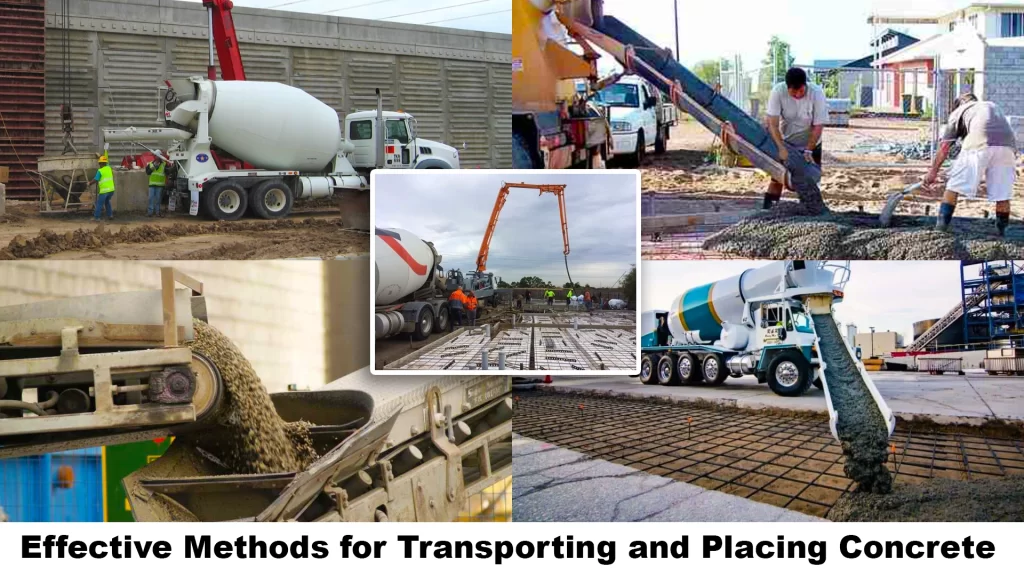Concrete is one of the world’s most popular building materials, noted for its strength, durability, and versatility. However, for the finest results, the concrete must be carefully transported and placed. Here are some key procedures and best practices for transporting and placing concrete to achieve a high-quality finish.
Transporting Concrete
Transporting concrete from the mixing site to the construction site necessitates meticulous preparation to avoid segregation, moisture loss, and hardening before placement. Here are a few common methods:
Transit Mixers (Ready Mix Trucks)
Transit mixers are rotating drum trucks that keep the concrete moving, preventing it from hardening during transportation.
Advantages: They are suitable for delivering concrete over long distances and can handle enormous amounts.
Best suited for large building projects with a mixing plant located far away from the job site.
Dumpers and Tippers:
These are open trucks used to deliver concrete over short distances.
Advantages: They are suitable for short distances and may be loaded and unloaded quickly.
Best for: small to medium-sized projects within a short distance of the mixing site.
Belt Conveyors:
Belt conveyors distribute concrete horizontally and sometimes upward.
Advantages: They give a continuous and homogeneous concrete flow, reducing segregation.
Best for projects that require horizontal deployment over vast areas, such as highways.
Pumps
Concrete pumps utilise high-pressure systems to transport concrete through pipelines.
Advantages: They are suitable for high-rise buildings and difficult-to-access regions.
Skyscrapers, bridges, and other complicated constructions benefit the most from this material.
Placing Concrete
Proper concrete placement is required to provide the necessary strength, durability, and finish. Here are a few key methods:
Direct Placement
Direct placement is the process of pouring concrete straight from the mixer or dumper into the formwork.
Advantages: It is straightforward and cost-effective for easily accessible places.
It is best for use on ground slabs, foundations, and accessible structural components.
Chutes
Chutes are sloped planes that guide concrete from the transport vehicle to the formwork.
Advantages: They are useful for pouring concrete in lower regions.
Basement flooring and other below-grade buildings are ideal applications.
Bucketing
Bucketing is the lifting and placement of concrete using buckets linked to cranes or hoists.
Advantage: They can reach high or otherwise inaccessible locations.
Ideal applications include high-rise skyscrapers and big vertical constructions.
Vibratory Placement
Vibrators settle the concrete into formwork and ensure adequate compaction.
Advantages: They minimise air bubbles and produce a dense, homogeneous finish.
Best for structural elements such as columns, beams, and walls.
Best practices for transporting and placing concrete
Timing: Place the concrete within 90 minutes of mixing to avoid setting.
Uniformity: To prevent segregation, avoid excessive handling, and maintain continuous flow.
Use vibrators to crush the concrete and remove air pockets.
Curing: For best strength and longevity following placement, concrete must be properly cured.
Transporting and installing concrete correctly is critical to the success of any construction project. Understanding and implementing the necessary processes ensures that the concrete retains its integrity while meeting structural requirements. Whether you’re working on a modest residential project or a huge commercial facility, these recommended practices can help you get the greatest outcomes.



